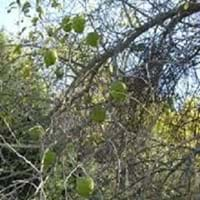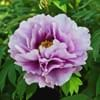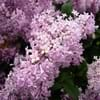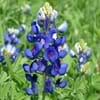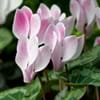Life Span
Perennial
Perennial
Type
Flowering Plants, Shrubs
Tree
Origin
Asia, North America, Southern Europe
Southeastern United States, South-Central United States, Texas
Types
Aristocrat, Buckeye Belle, Henry Bockstoce , Abalone Pearl, Coral Supreme, Cytherea, Charlie's White
Not Available
Number of Varieties
Not Available
Habitat
Hillside, Woods
Grassland, Hillside, Humid climates, Roadsides, Woods
USDA Hardiness Zone
3-9
4-10
Sunset Zone
A3, 1a, 1b, 2a, 2b, 3a, 3b, 4, 5, 6, 7, 8, 9, 10, 11, 12, 13, 14, 15, 16, 17, 18, 19, 20, 22
2a, 2b, 3a, 10, 11, 12, 13
Habit
Clump-Forming
Oval or Rounded
Flower Color
Pink, Red, White
Yellow green
Flower Color Modifier
Not Available
Bicolor
Fruit Color
Not Available
Green
Leaf Color in Spring
Dark Green
Green
Leaf Color in Summer
Dark Green, Green
Green
Leaf Color in Fall
Bronze, Dark Green, Green
Yellow, Green, Yellow green
Leaf Color in Winter
Not Available
Not Available
Leaf Shape
Compound
Ovate
Plant Season
Spring
Spring, Summer, Fall
Sunlight
Full Sun, Part sun
Full Sun, Partial Sun
Type of Soil
Loamy
Clay, Loam
The pH of Soil
Neutral
Acidic, Neutral, Alkaline
Soil Drainage
Well drained
Average
Bloom Time
Spring, Summer
Spring, Late Spring
Tolerances
Not Available
Soil Compaction
Where to Plant?
Ground, Pot
Ground
How to Plant?
Grafting, Seedlings, Stem Planting, Transplanting
Seedlings, Stem Planting
Plant Maintenance
Medium
Medium
Watering Requirements
Does not require lot of watering, It cannot sustain wet-feet, Keep the ground moist but not water-logged, Needs watering once a week, Prefer drip-irrigation instead of Over-head watering, Water occasionally
Do Not over Water, Requires regular watering, Water Deeply, Water when soil is dry
In Summer
Lots of watering
Lots of watering
In Spring
Moderate
Moderate
In Winter
Average Water
Average Water
Soil pH
Neutral
Acidic, Neutral, Alkaline
Soil Type
Loamy
Clay, Loam
Soil Drainage Capacity
Well drained
Average
Sun Exposure
Full Sun, Part sun
Full Sun, Partial Sun
Pruning
Do not prune during shooting season, Prune to control growth, Remove dead or diseased plant parts, Remove deadheads
Remove damaged leaves, Remove dead branches, Remove dead leaves
Fertilizers
All-Purpose Liquid Fertilizer
All-Purpose Liquid Fertilizer
Pests and Diseases
Botrytis Blight, Leaf spot, Stem spot, Viruses
Red blotch
Plant Tolerance
Not Available
Drought
Flowers
Yes
Insignificant
Flower Petal Number
Semi-Double
Not Available
Fragrant Bark/Stem
No
Yes
Foliage Texture
Coarse
Medium
Foliage Sheen
Glossy
Matte
Attracts
Ants
Not Available
Allergy
Not Available
no allergic reactions
Aesthetic Uses
Beautification, Bouquets, Showy Purposes, Used for decorating walls, fences, gates, hedges, etc.
Not Used For Aesthetic Purpose
Beauty Benefits
Not Available
Not Available
Environmental Uses
Air purification
Air purification
Medicinal Uses
Cough, Gout, Headache, Heartburn, Kidney problems, Upset stomach, Urinary tract problems
Cancer, Tooth ache, Urinary tract problems
Part of Plant Used
Flowers, Root, Seeds
Bark, Flowers, Fruits
Other Uses
Showy Purposes, Used as Ornamental plant, Used for fragrance
Used as an insecticide, Wood log is used in making fences
Used As Indoor Plant
No
No
Used As Outdoor Plant
Yes
Yes
Garden Design
Feature Plant, Foundation, Mixed Border
Mixed Border, Shade Trees, Street Trees
Botanical Name
Paeonia suffruticosa
MACLURA pomifera
Common Name
Peony
Bois d’arc, Hedge Apple, Osage Orange
In Hindi
Peony
ओसेज संतरे
In German
Pfingstrose
Osage Orange
In French
Pivoine
Osage orange
In Spanish
Peonía
Osage naranja
In Greek
παιωνία
Osage Πορτοκαλί
In Portuguese
Peônia
Osage laranja
In Polish
Piwonia
Osage Pomarańczowy
In Latin
AGLAOPHOTIS
Aliquam Osage
Phylum
Magnoliophyta
Magnoliophyta
Class
Magnoliopsida
Magnoliopsida
Order
Not Available
Rosales
Family
Paeoniaceae
Moraceae
Clade
Angiosperms, Core eudicots, Eudicots
Angiosperms, Eudicots, Rosids
Tribe
Not Available
Moreae
Subfamily
Not Available
Not Available
Number of Species
Not Available
Season and Care of Peony and Osage Orange
Season and care of Peony and Osage Orange is important to know. While considering everything about Peony and Osage Orange Care, growing season is an essential factor. Peony season is Spring and Osage Orange season is Spring. The type of soil for Peony is Loamy and for Osage Orange is Clay, Loam while the PH of soil for Peony is Neutral and for Osage Orange is Acidic, Neutral, Alkaline.
Peony and Osage Orange Physical Information
Peony and Osage Orange physical information is very important for comparison. Peony height is 76.20 cm and width 61.00 cm whereas Osage Orange height is 760.00 cm and width 1,219.00 cm. The color specification of Peony and Osage Orange are as follows:
Peony flower color: Pink, Red and White
Peony leaf color: Dark Green
Osage Orange flower color: Yellow green
- Osage Orange leaf color: Green
Care of Peony and Osage Orange
Care of Peony and Osage Orange include pruning, fertilizers, watering etc. Peony pruning is done Do not prune during shooting season, Prune to control growth, Remove dead or diseased plant parts and Remove deadheads and Osage Orange pruning is done Remove damaged leaves, Remove dead branches and Remove dead leaves. In summer Peony needs Lots of watering and in winter, it needs Average Water. Whereas, in summer Osage Orange needs Lots of watering and in winter, it needs Average Water.

